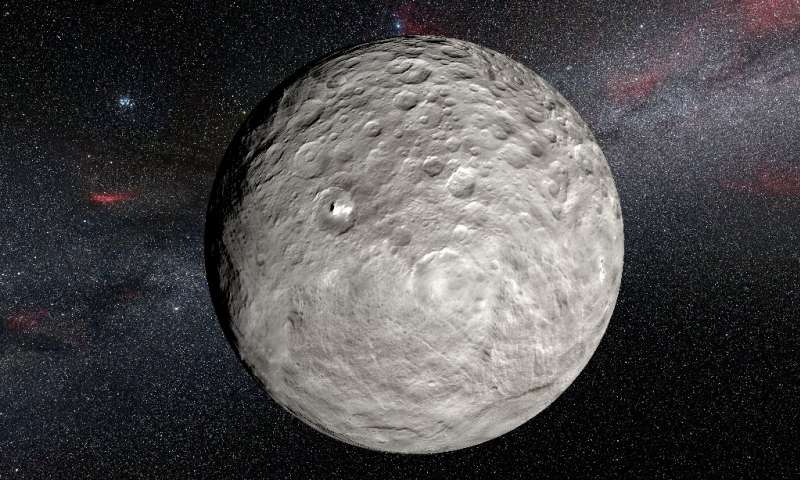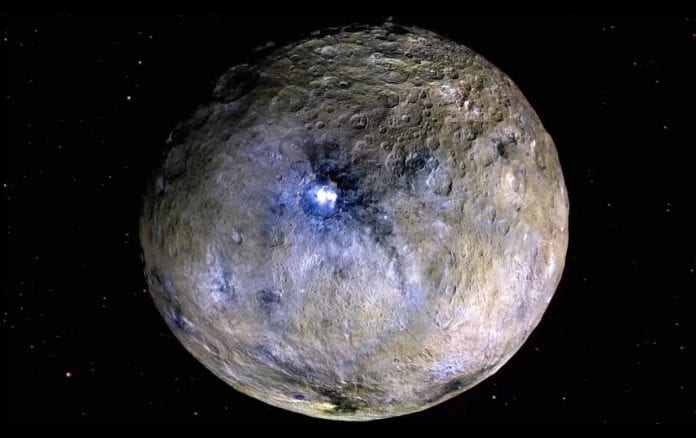Dwarf Planets are a big anomaly when it comes to the makeup of the Solar System. They are neither too small to be called an asteroid, neither too big to be called a planet. Many dwarf planets have been discovered in the area around Pluto and beyond, however not one of them has ever come close to the amount of popularity that Pluto has. Named after the beloved Disney character, the now Dwarf Planet was counted amongst the planets of the Solar System.
After much deliberation, it was decided to downgrade its status from a planet to a dwarf one. This indicated that we still have a long way to go before we can be confident about our knowledge of these celestial bodies.

Another proof of this fact was obtained recently. Researchers have said that Ceres, a dwarf planet in the asteroid belt, has bright spots, which means that it has an underground ocean that is still active today. Lying in the region between Mars and Jupiter, Ceres is one of many chunks of rock that orbit the Sun in that region. It has so many asteroids doing the same that it has been aptly named the asteroid belt. Ceres is the largest among these rocky sun orbiters.
Ceres is a “fossil” from the early days of the solar system when planets and asteroids were crashing into each other in huge numbers. The Dawn spacecraft, launched in 2007, surveyed the whole of Ceres and sent back the data to Earth, which was then analyzed by researchers.
They concluded that Ceres once used to be the home of a global ocean that had frozen over. A recent review of the data, carried out by researchers and published in Nature suggests that it still has a global ocean, just underground.

What is The Proof That The Dwarf Planet has water?
The study has confirmed that Ceres has liquid under its ice shell. This means it is possible, due to the proximity of Ceres to Earth that it may have been once a habitable planet and may still harbour life in its ocean.
There were bright spots on Ceres which reflected a lot of light. Researchers focused on one such spot in the 20 million-year-old Occator crater. Researchers also discovered the presence of the compound hydrohalite, a material which is common in sea ice but hadn’t been seen beyond earth before this.
Many speculations are being made about the implication of this study. A lot of materials that are necessary for life on Earth have been found on Ceres, and this indicates that there is a possibility this discovery could prove to be a big opportunity in selecting our next target to send a probe to.
Further Reading:


